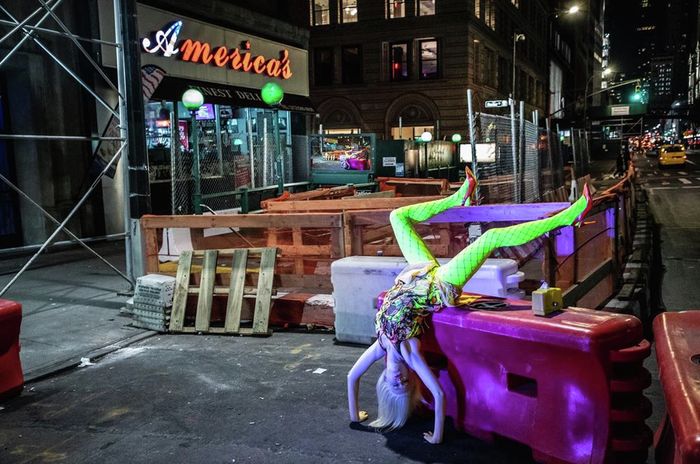The mind of the industry: Curators, designers and consumers in conversation
Within the hectic world of consumption, Isabel Sebode explores the role of the fashion curator in providing exhibitions that contextualise fashion and present it within its cultural and historic background.
In a recent article on the ‘beauty of uselessness’ I considered fashion as art, in order to encourage an open-mindedness towards the consideration of fashion beyond its use-value, focusing instead on its beauty. This mentality expresses itself within the occupation of fashion curation - an often-misunderstood craft that thrives off of the aesthetic principle of ‘art for art’s sake’; a desire to hedonistically observe fashion whilst gaining satisfaction from doing so.
With a focus on what seems like the holy trinity of fashion (designer, photographer, model), the fashion curator is one of the overlooked, yet vitally important roles that reaches both the consumer and designer. The curator is best explained through comparison with a literary critic: they give attention to themes and context, aspiring to compose exhibitions that “give further context to the story” of the clothing, as Shonagh Marshall elucidated in an interview with Twin Magazine in 2017.
In her explanation of fashion exhibits, Marshall places an emphasis on the distinction between fashion and fine art. In the former, the exhibition intends to provide context, whereas in the latter, “the art is centre-front in laying the narrative”. A bold distinction, which presents fashion curation as an enlightening occupation, by which the consumer is encouraged to examine fashion beyond either its aesthetic or functional appeal, in order to fully appreciate its underlying significance. Fashion curators work to shift the paradigm of thought that defines how we view fashion, emphasising its often-overlooked cultural and historical value.
In terms of fashion curation, Vince Aletti is peculiar: entering his small apartment in the East Village, it is impossible to miss his obsession with fashion magazines. In an interview with The New Yorker in April 2019, Aletti estimates his collection to be as large as ten thousand magazines. Or maybe double that. His mass of magazines is the starting point for any curator, providing an archive of fashion history and journalistic flux. Through curating his pieces, he composed his book ‘Issues’, featuring a selection of 100 magazines to reveal a rarely-seen collection of pictures that showcase fashion and its photographers from a mostly forgotten point of view. His curation is meticulous; he finds explanations and stories for each picture as he engages with the art of fashion and photography. Yet, his dedication to a time-consuming, space-occupying pastime is not solely the decadent delight of an individual: it is principal resource for many designers to develop new collections.
“You do research and tell a story, only you are using objects to tell a story.”
In fact, Aletti’s private occupation is a vital part of the fashion industry. The UAL manages its own centre for fashion curation, to provide “a unique catalyst and platform for research, exhibitions, symposiums” as well as for the development of new collections. For instance, Balenciaga choose to include a gown from 1954 in a newly revised manner in the Fall ’17 collection, indicating the manner by which designers are using the broad availability of collections or curated exhibitions in a design process that fuses past and present.
The curations themselves are nuclei of fashion knowledge, an art mastered by Dr. Valerie Steele. Working at the Fashion Institute of Technology, her role as a Director of the Museum includes overseeing exhibitions on topics such as on the corset or the gothic within fashion history – as Marshall phrased it, ‘bringing fashion into context’.
Steele stresses that curation is more than what uneducated prejudice presents it as. Instead of being a redundant craft, it has the same socio-cultural value as an exhibition in the National Gallery would have: “You do research and tell a story, only you are using objects to tell a story”, she tells Twin. The garments are presented as pieces of history and become part of the historical narrative through the exhibition, with the aim to achieve this “in a way that is both educational and entertaining; […] to bring something new to the whole subject of fashion.”
As a result, fashion’s value is made accessible to the general public, demonstrating how curation exists in a dialogue with designer and consumer. For instance, the V&A has announced an exhibition on the history of bags in April 2020, focusing on various artefacts from 16th century onwards, thereby placing this prosaic, useful item of our daily life into a historical narrative. Besides fashion history, fashion exhibitions seek to present contemporary fashion that we are currently surrounded by in an innovative approach. In January 2018, Patricia Mears curated an exhibition on Expedition: Fashion from the Extreme, showcasing the sleeping-bag-coat as an essential in functional wear, as well as its adaptations in high fashion. Mears’ exhibition presents the links between fashion as function, beauty, art and history, thereby exploring a single garment’s role within our culture, both for art’s sake and for survival.
What a conversation with Aletti, Marshall and Steele encourages is thinking about curation as not only vital to the fashion industry’s creative process, but to culture itself. Similar to how we appreciate when authors make allusions to classical texts, engaging in intertextuality, our appreciation of fashion should be reliant on its cross-disciplinary and everlasting nature. The result? Curation facilitates the creation of fashion with a cultural value, whilst providing the consumer with an awareness of the significance in what they may otherwise be labelling off as mere clothing.
 Comment / Plastic pubs: the problem with Cambridge alehouses 5 January 2026
Comment / Plastic pubs: the problem with Cambridge alehouses 5 January 2026 News / Cambridge businesses concerned infrastructure delays will hurt growth5 January 2026
News / Cambridge businesses concerned infrastructure delays will hurt growth5 January 2026 News / Cambridge academics stand out in King’s 2026 Honours List2 January 2026
News / Cambridge academics stand out in King’s 2026 Honours List2 January 2026 News / AstraZeneca sues for £32 million over faulty construction at Cambridge Campus31 December 2025
News / AstraZeneca sues for £32 million over faulty construction at Cambridge Campus31 December 2025 Interviews / You don’t need to peak at Cambridge, says Robin Harding31 December 2025
Interviews / You don’t need to peak at Cambridge, says Robin Harding31 December 2025











